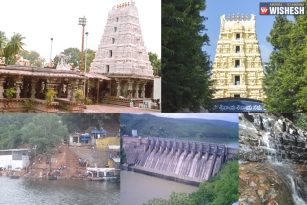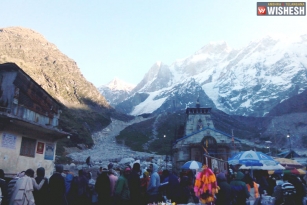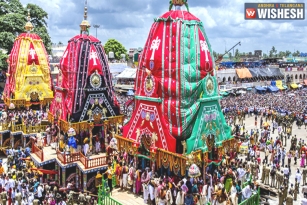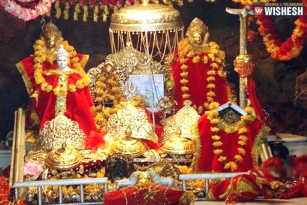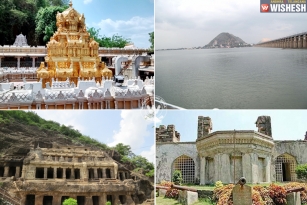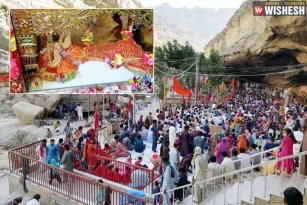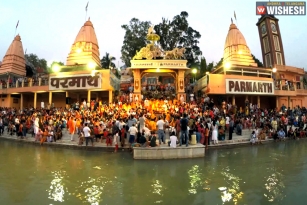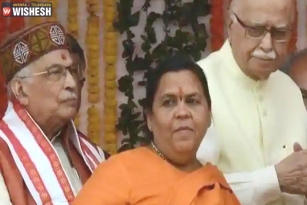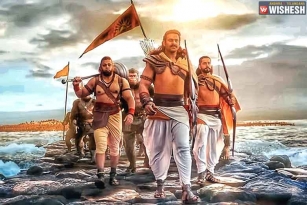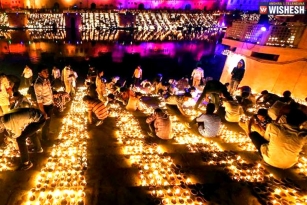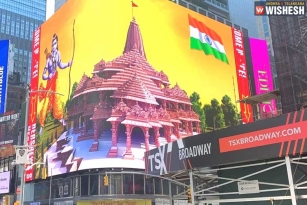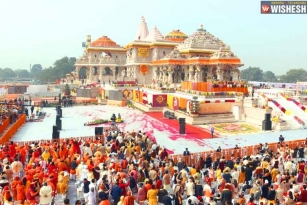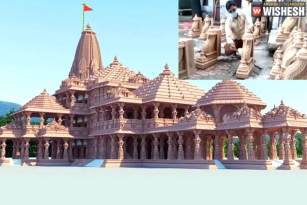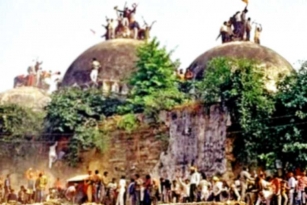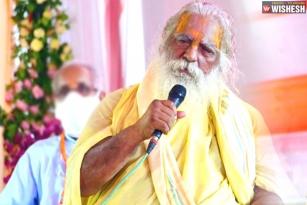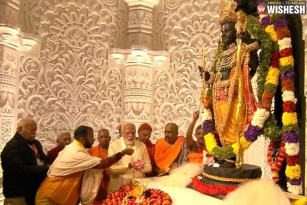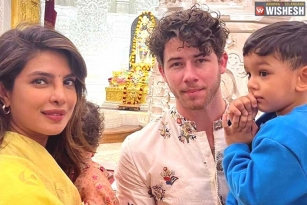Ayodhya - Punya Bhoomi - Birth place of Maryadha Purushotham SriRam
September 04, 2015 19:03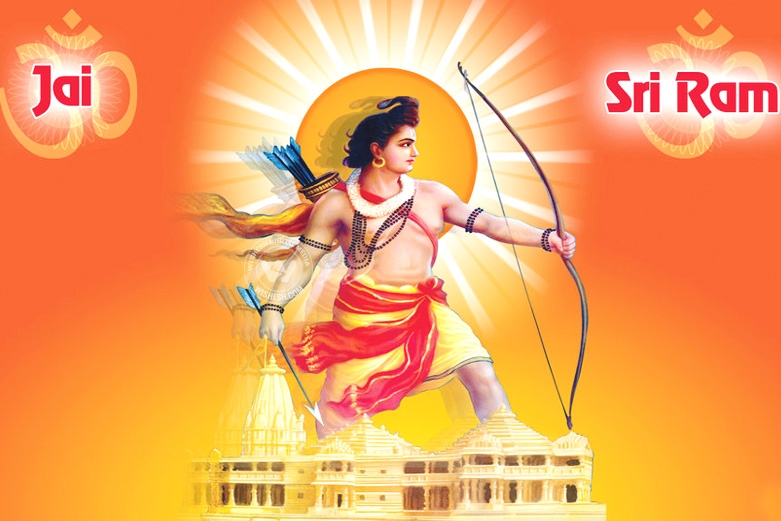
Ayodhya is an ancient city of India, the old capital of Awadh, in the Faizabad district of Uttar Pradesh, India. Ayodhya is described as the birth place of Lord Sriram, and the capital of the ancient Kosala Kingdom. This holy city is described as early as in the Hindu Epics. Ayodhya has an average elevation of 93 metres. Ayodhya is situated on the right bank of the river Sarayu, 555 km east of New Delhi., as it is called within sacred precincts, just 6 km from Faizabad, Ayodhya is a popular pilgrim centre. 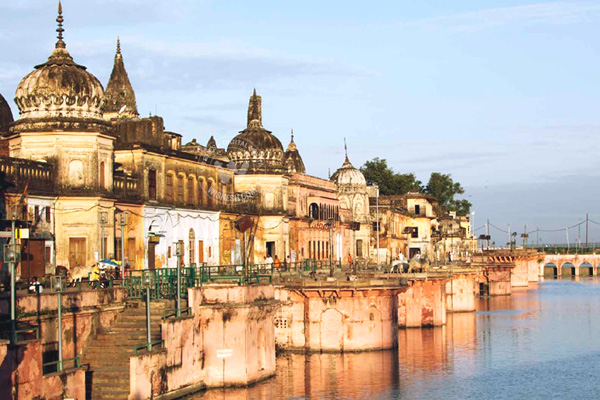
Ayodhya is pre-eminently a city of temples yet, all places of worship here are not only of Hindu religion. At Ayodhya several religions have grown and prospered simultaneously and also at different periods of time in the past. Remnants of Hinduism, Buddhism, Jainism and Islam can still be found in Ayodhya. According to Jain tradition, five Tirthankaras were born at Ayodhya, including Adinath (Rishabhadeva) the 1st Tirthankar. The Brahmanda Purana considers Ayodhya as one of the six holiest cities in Hinduism.
History
The name Ayodhya comes from the Sanskrit word “yudh”, meaning "fight" or "wage war," and it translates to either "not to be fought" or, less literally, "unconquerable." During the time of Gautama Buddha the city was called Ayojjhā in Pali and Ayodhya in Sanskrit.
In the first few centuries of the Common Era it was called Saketa and was conquered by the Kushan / Yuezhi Emperor Kanishka in 127 CE, who made it the administrative centre of his eastern territories. The name occurs again in Faxian in the early 5th century. It is not clear when the name changed, but by the time of the visit of the Chinese pilgrim monk, Huan Tsang, in 636 CE, it was known as Ayodhya.
Buddhist temples, monuments and centers of learning having been established here during the age of the Mauryan Empire and the Gupta Dynasty. Ayodhya reached its glorious peak as known to history during the reign of the Guptas over India. This city was also a significant trade centre in 600 BC. Historians have identified this place as Saketa, a key Buddhist centre during the 5th century BC. It is a widely held belief that Buddha visited Ayodhya on several occasions.
Ayodhya has a historical significance for the Jain community too. This is the birth place of two important Jain Tirthankaras who were born in the early centuries CE. Jain texts also stand testimony to the visit of Mahavir, Jainism's last Tirthankar to this city. Ayodhya is also the birthplace of five Tirthankars, including the first Tirthankar of Jainism, Shri Rishabh Dev. He is known as the father of the Jain religion.
Bhagwan Swaminarayan, founder of the Swaminarayan Sect of Hinduism lived here during his childhood years. It was from Ayodhya that Bhagwan Swaminarayan started his seven year journey across India as a 'Neelkanth'.
Under Mughal rule, it was the seat of the governor of Awadh, and later during the British Raj the city was known as Ajodhya or Ajodhia and was part of the United Provinces of Agra and Oudh. With Muslim rulers established around the city under Mohammed of Ghor, it lost its strategic and economic importance to Lucknow and Kanpur.
Saadat Ali Khan, Nawab of Awadh, bestowed the Riyasat of Ayodhya on his loyal Brahmin soldier Dwijdeo Mishra of the Kasyapa gotra, for quelling revenue rebels in Mehendauna in Eastern UP. The Hanumangarhi temple at Ayodhya was built by the Nawab of Awadh.
Ayodhya was annexed in 1856 by the British rulers. Between 1857 and 1859, this place was one of the main centers where the sparks of the first war of Indian Independence originated. These sparks later led to a nationwide revolt of the Indian soldiers in opposition to the British East India Company that began in Calcutta.
Legends
Ayodhya is closely associated with Lord Rama, the seventh incarnation of Lord Vishnu. The ancient city of Ayodhya, according to the Ramayana, was founded by Manu, the law-giver of the Hindu. For centuries, it was the capital of the descendants of the Surya dynasty of which Lord Rama was the most celebrated king. Ayodhya during ancient times was known as Kosaladesa.
Ayodhya is named after King Ayudh. He was the founder of this city and hence came the name Ayodhya. It has been mentioned in the ancient Hindu scriptures that King Ayudh was one of the forefathers of Lord Rama. The same Raghuvanshi dynasty had the great king Raja Harischandra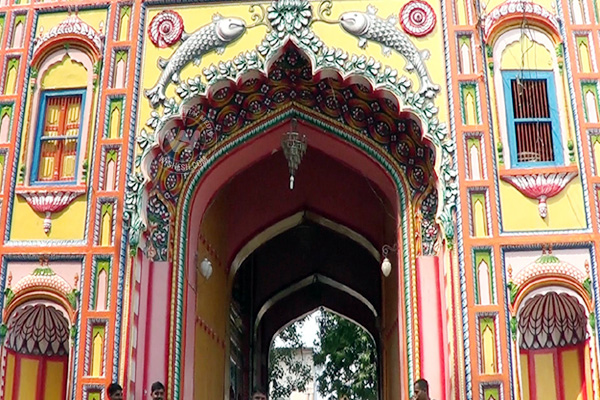
The illustrious Ikshvaku of the solar clan (Suryavansha) was the ruling dynasty of this region. According to tradition, Ikshvakus was the eldest son of Vaivasvata Manu, who established himself at Ayodhya. The earth is said to have derived its name `Prithivi’ from Prithu, the 6th king of the line. A few generations later came Mandhatri, in whose line the 31st king was Harischandra, known widely for his love of truth. Raja Sagar of the same clan performed the Asvamedha Yajna and his great grandson Bhagiratha is reputed to have brought mother Ganga to earth by virtue of his penance. Later in the time came the great Raghu, after whom the family came to be called as Raghuvamsa. His grandson was Raja Dasaratha, the illustrious father of Rama, with whom the glory of the Kosala dynasty reached its highest point.
Saint Valmiki is said to have written his famous devotional poem Valmiki Ramayan, also called the Ramayan regarding the life of Lord Sriram. Other sages like Kamban and Tulsidas also wrote their verses of Ramayan in the praise and glory of Lord Sriram and the magnificent city of Ayodhya. Saint Tulsidas' Ramayan popularly known as Ramacharitamanas sings the praise & glory of Lord 'Sriram'. It is one of the most revered scriptures of 'Sanatana Dharma' which speaks of idealism, selfless devotion, & piousness. This divine religious text is a source of inspiration, enlightenment & bhakti for billions across the world. Several Tamil Alwars mention the city of Ayodhya. The opening chapters of the Ramayan recount the magnificence of the city, the glories of the monarch and the virtues, wealth and loyalty of his people. Ayodhya is also said to be the birthplace of King Bharath (The First Chakravarti King), Bhahubali, Brahmi, Sundari, King Dasaratha, Acharya Padaliptasurisvarji, King Harishchandra, Shri SriRama Achalbhrata, and the ninth Gandhara of Mahavir Swami.
In Atharvaveda, this place was described as a city that was made by gods and was as prosperous as heaven itself. Skanda and some other Puranas rank Ayodhya as one of the seven most sacred cities of India.
Struggles for the Holy Sriram Janmabhoomi
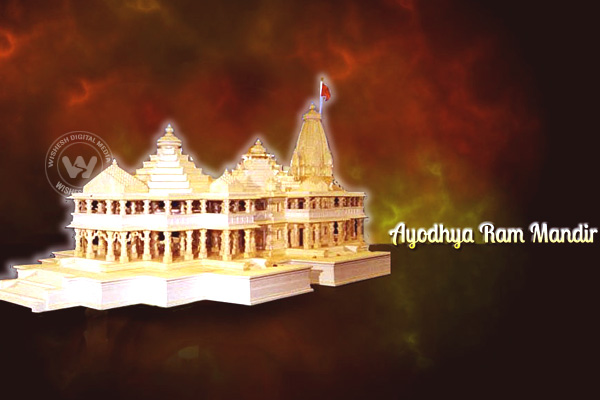
When the Mughal invader Babur came down from Kabul in 1525, he first defeated Ibrahim Lodi at the battle of Panipat and then the Rajput King of Chittorgarh, Rana Sangram Singh at Khanwa, making pioneering use of cannon and light cavalry. After these triumphs, Babur took over a substantial part of northern India.
One of his generals, Mir Baki Khan came to Ayodhya in 1528 and after destroying a pre-existing temple of Lord Sriram at the site, built a Mosque. Mir Baki, after building the mosque, named it Babri Masjid. 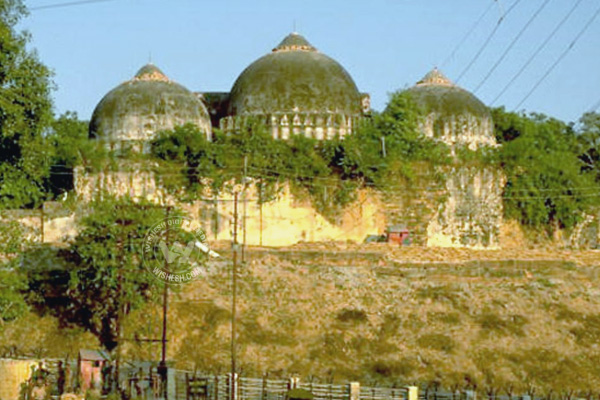
As per historians, since 1528 there have been at least 76 armed conflicts in which over 300,000 Hindus sacrificed their lives to restore the Ram Janma Bhoomi temple.
During Babar's reign (1528-1530) itself Hindus launched 4 attacks in which 100,000 people were killed. During the Humayun's reign (1530-1556) there were 10 separate initiatives to regain control. During Akbar's reign (1556-1605) 20 battles were fought and in order to avoid further conflict, during the latter part of his reign Akbar allowed Hindus to build a platform known as 'Ram Chabutra', and to install and worship images of Ram Parivar in the Ram Janmabhoomi compound. This practice was later opposed by Aurungzeb which resulted in most battles for the control of the shrine during his reign. In Aurangzeb’s reign 30 battles were fought and one such battle was led by Guru Gobind Singh in which Aurangzeb’s army was defeated. Four years later, Aurangzeb again attacked Ayodhya and regained control after killing 10,000 Hindus. During Sahdat Ali (1798-1814) reign there were 5 battles. During Nasir-uddin Haidar (1814-1837) reign 3 battles were fought. In Wajid Ali Shah (1847-1857) period there were 2 battles and during British Rule (1912-1934), Hindus fought 2 armed conflicts.
In 1751 A.D. Maratha Sardar Malhar Rao Holkar after defeating the Pathans in the plains of Ganga and Yamuna, asked Nawab Safderjang to hand over Ayodhya, Kashi and Prayag to the Peshwas. In a letter dated February 23, 1756, Nanasaheb Peshwa asked Sardar Scindia to annex Ayodhya and Kashi as the handover of these holy places was already promised to Raghoba Dada by Suja-uddoula. Later in 1789 A.D. Sardar MahadJi Scindia did annex Ayodhya, Mathura and Kashi, but due to his untimely demise, he was not able to restore the temples of Ram Janma Bhoomi, Krishna Janma Bhoomi and Kashi Vishweshwar back to Hindus.
Joseph Tieffenthaler (1710 - 1785), an Austrian Jesuit priest toured Oudh (Ayodhya) region between 1766 and 1771 A.D states 'The Emperor Aurungzeb destroyed the fortress called Ramkot and built at the same place a Mohammedan mosque with 3 domes. But Hindus continued to practice their religious ceremonies in both the places (inside the 3 domed Babri structure and the compound), knowing this to have been birth place of Rama, by going around it 3 times and prostrating on ground".
During the First War of Independence of 1857 the local Muslim leader Amir Ali persuaded the Muslims to hand over the disputed place to Hindus and jointly fight with the British. However the British won the War of 1857 and Amir Ali and Hindu leader Baba Ram Charan Das were publicly hanged from a tree near the Ram Janma Bhoomi. The British subsequently put a railing wall between Babri structure and the courtyard and separated the Muslim worshipers who got the Babri structure and Hindus had no choice but to do puja outside in the courtyard.
In 1934, during the armed conflict between Hindus and Muslims the Babri structure was damaged. Since 1936, the Babri structure was an abandoned building and did not function as a community mosque for local Muslims. A report dated December 10, 1949 by the Waqf inspector Mohammad Ibrahim, to the U.P. Sunni Central Board of Waqf, states that 'due to the fear of Hindus and Sikhs, No one offered namaz in the said 'mosque'.
On December 23, 1949 the image of 'Ramalalla' appeared in the disputed structure and Hindus resumed prayers and worship inside. Since December 23, 1949 there have been daily Hindu prayers and worship at the Ram Janma Bhoomi Temple.
December 6th 1992, the golden moment for the people of India. Spirited karsevaks demolished the shame of the country, the black mark on the history of Hindustan. On 6th December 1992, around noon, a young man managed to slip past the police cordon and climbed the mosque, brandishing a saffron flag. The mob, then stormed the structure. The mob set upon the building with axes, hammers, and grappling hooks, and within a few hours, the entire mosque was leveled. At last the Birthplace of Lord Sriram is liberated from the invaders and the pseudo secularists.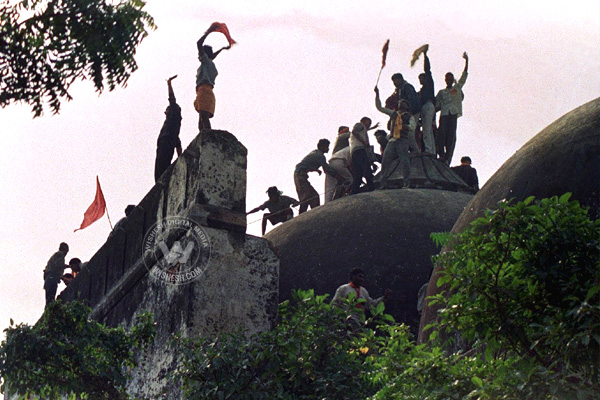
Memorable quotes
"Mosques built after destroying temples are the sign of slavery and Muslims should hand over the same to Hindu Society" - Mahatma Gandhi in 'Navjeevan' dated July 17, 1937.
"Hindus profess secularism because they are cowards and are afraid of Muslim countries." - Syed Shahabuddin - Convenor of Babri Masjid Coordination Committee (BMCC) in 'Sunday' dated March 20, 1983.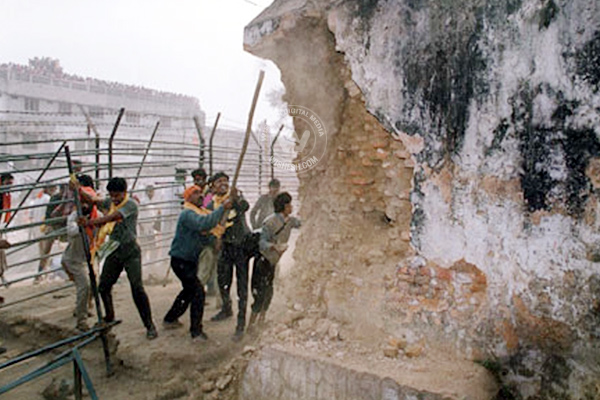
Hanuman Garhi
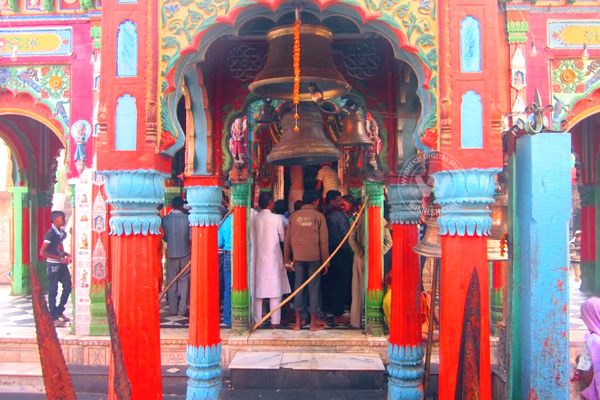
The temple is on the way to Sriram Janmabhoomi and is few metres away. A massive structure in the shape of a four sided fort with circular bastions at each corner houses a temple of Hanuman and is the most popular shrine in Ayodhya. Situated in the centre of the town, this temple is approachable by a flight of 76 steps. Legend has it that Hanuman lived here in a cave and guarded the Janambhoomi or Ramkot. The main temple contains the statue of Maa Anjani, with Bal Hanuman seated on her lap. The faithful believe that all their wishes are granted with a visit to this holy shrine.
Kanak Bhawan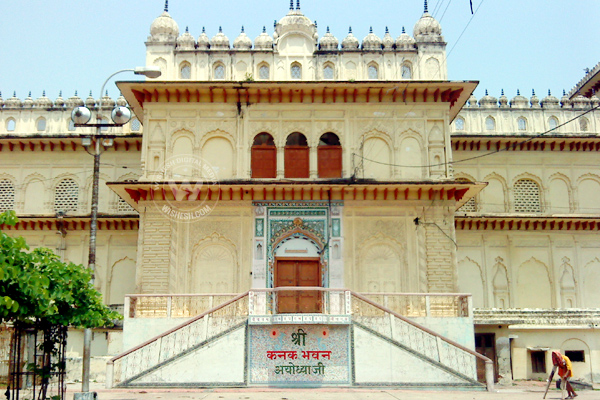
This is famous temple in Ayodhya. As per mythology it is gifted to Sita by mother Kaikai after marriage. This is private palace of lord SitaRam.
Swarg Dwar
According to mythology, Lord Rama is said to have been cremated here.
Mani Parbat and Sugriv Parbat
The first of these ancient earth mounds is identified with a stupa built by the Emperor Ashoka, while the second is believed to be an ancient monastery.
Treta ke Thakur
This temple stands at the place where Rama is said to have performed the Ashvamedha Yajnya. About 300 years ago the Raja of kulu built a new temple here, which was improved by Ahalyabai Holkar of Indore during 1784, at the same time the adjoining Ghats were also built. The initial idols in black sandstone were recovered from Sarayu and placed in the new temple, famous as Kaleram-ka-Mandir.
Nageshwarnath Temple
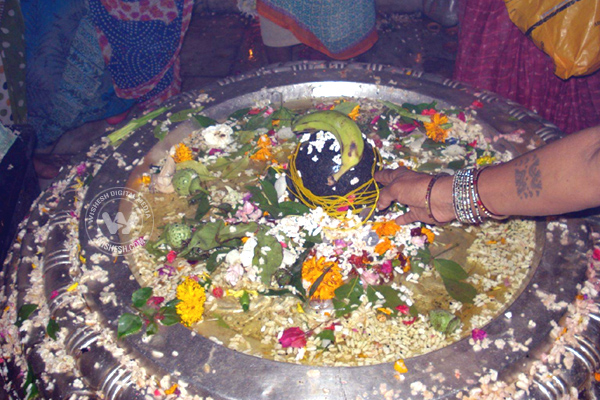
The temple of Nageshwarnath is said to have been established by Kush the son of Rama. Legend has it that Kush lost his armlet, while bathing in the Sarayu, which was picked up by a Nag-Kanya, who fell in love with him. As she was a devotee of Shiva, Kush erected this temple for her. It is said that this has been the only temple to have survived till the time of Vikramaditya, the rest of city had fallen into ruins and was covered by dense forests. It was by means of this temple that Vikramaditya was able to locate Ayodhya and the sites of different shrines here. The festival of Shivratri is celebrated here with great pomp and splendor.
Chhoti Devkali Mandir

This is the temple of goddess Ishani (Durga). As per mythology she is Kuldevi of Sita.
Other places of interest
Angad Tila, Shri Rama Janaki Birla Temple, Tulsi Smarak Bhawan, Ram ki Paidi, Kaleramji ka Mandir, Datuvan Kund, Janki Mahal, Gurudwara Brahma Kund, Rishabhadeo Jain Temple, Brahma Kund, Amawan Temple, Tulsi Chaura, Laxman Quila, Ram Katha Museum, Valmiki Ramayan Bhawan, are among other places of interest in Ayodhya.
A visit to the most guarded temple in the country.
Devotees who flock to Ayodhya are greeted by hawk-eyed security men, about 4,000 of them, deployed in every nook and corner of the disputed site. The idol of Ram, placed under a soiled canopy, is open to devotees every morning between seven and ten, and between three and six in the afternoon. Visitors have to pass through several security checkpoints before they can have a darshan of Ram lalla.
The checks begin nearly half a km from the temple site. After negotiating a steel barricade, visitors are made to walk through a metal detector. The security tightens as they proceed. There are 400 men and 200 women of the CRPF, 2,700 men of the Provincial Armed Constabulary and 200 of the Rapid Action Force keeping vigil. A new batch of policemen arrives in Ayodhya every three months: the idea is to prevent the cops from developing a 'bond' with the place and its residents.
Unknown to most devotees the cops are keeping a watch on them from towers to ensure that no one breaks the security ring. They are assisted by closed-circuit television with cameras installed at vantage points. When the devotees arrive at a second metal detector they are told to deposit all their belongings. Cameras, combs, pens and even matchboxes are a no-no beyond this point: visitors may keep only their wallets. As the visitors near the idol, the automatic gun-toting cops of the Central forces come into view. This is the sensitive zone: police sniffer dogs, in fact, scour the area each morning for explosives.
The devotees are frequently told to refrain from standing in front of the canopy for long. A quick darshan and they are asked to move on, after accepting prasad from a pundit. The government is spending more than Rs 5 crore a month on the security arrangements. After the darshan, the devotees take a circuitous route to a heavily-guarded exit, and walk past a fire tender and Home Guard contingents on the ready.
Apart from these security personals the very own army of Lord Sriram is also ready to take a stroll on you. If you have anything in your hand - even prasad - beware these monkey brigade will definitely snatch from you.
By Premji


